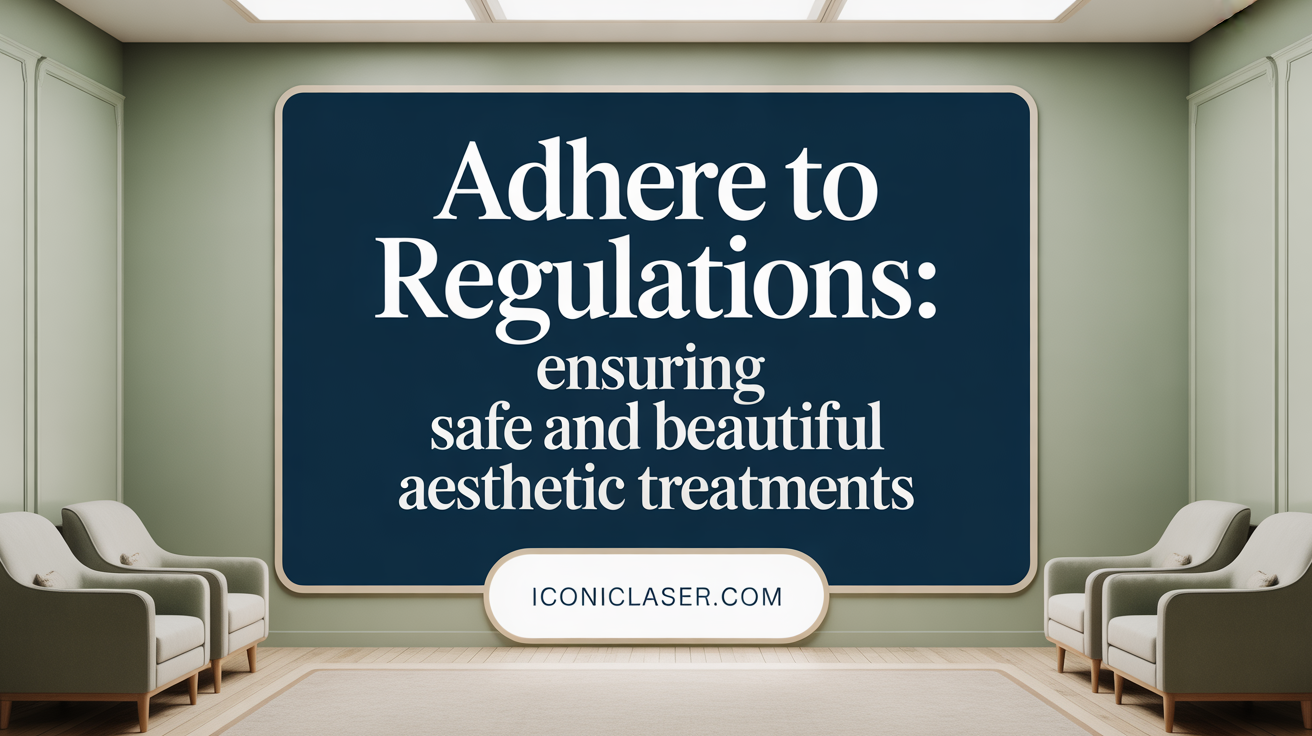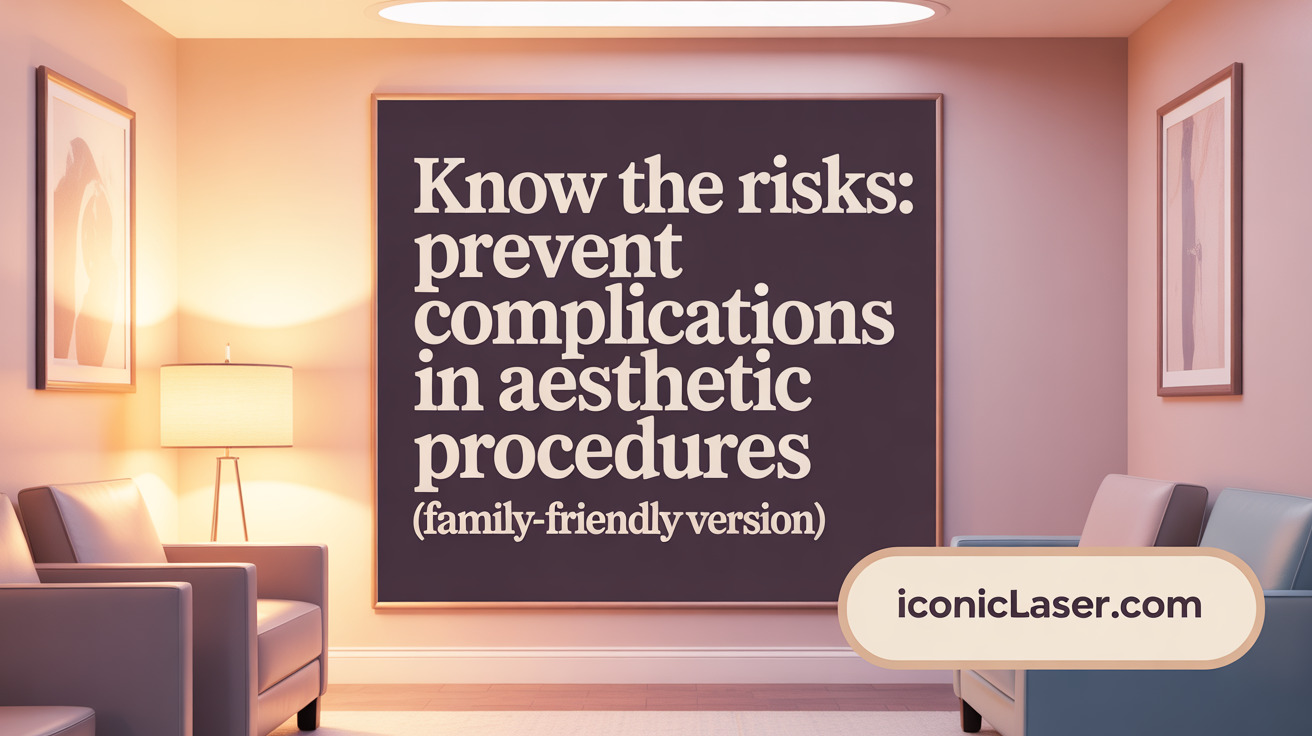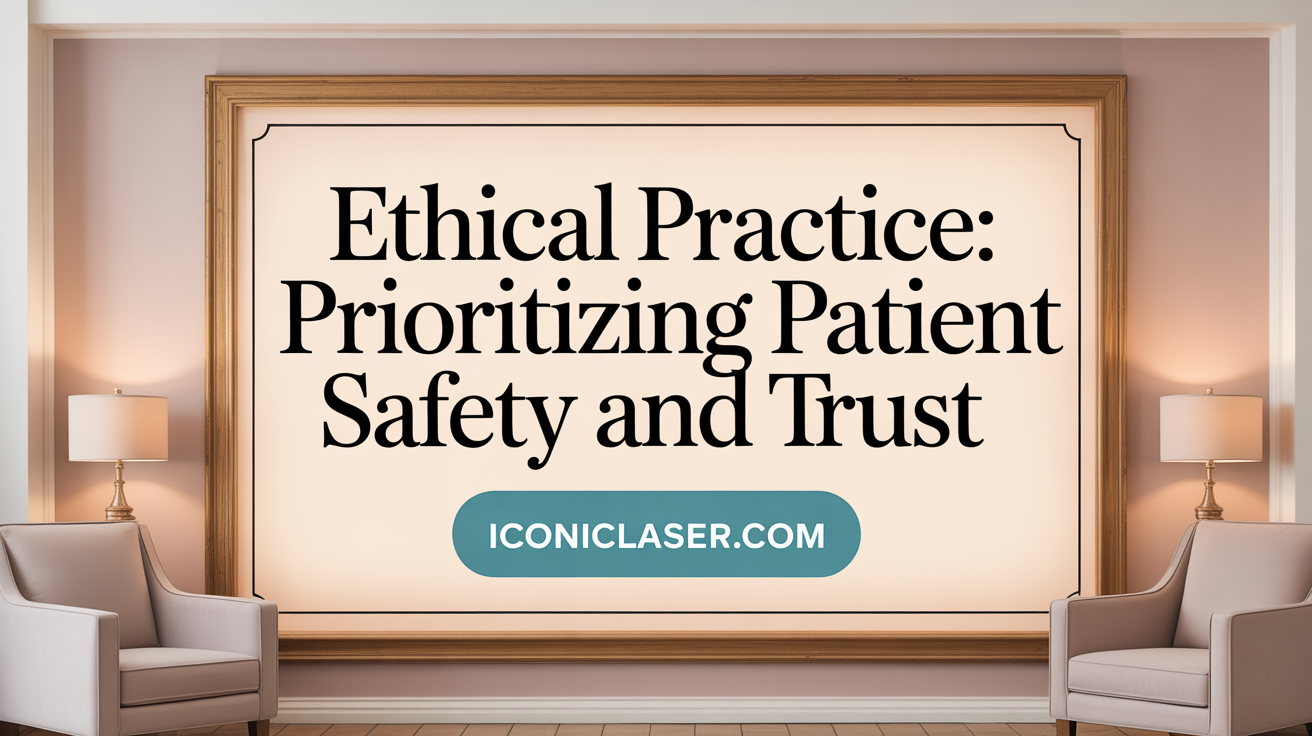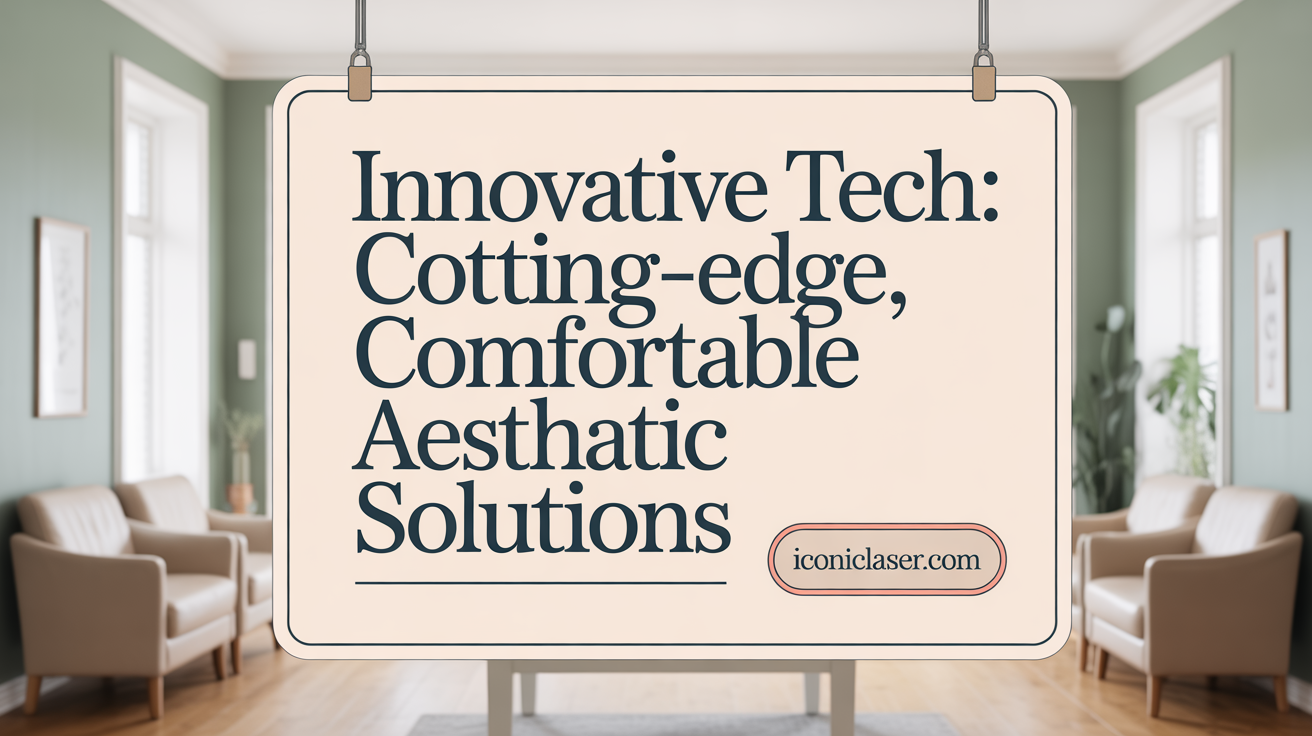Navigating the Intersection of Safety and Luxury in Aesthetic Treatments
As aesthetic medical procedures grow exponentially in popularity and sophistication, the fusion of luxury with rigorous safety standards has become paramount. Patients today seek not only transformative aesthetic results but also assurance that treatments are administered with expert care and uncompromising safety. This article explores how the aesthetic medicine industry balances the allure of luxury with the critical imperative of patient safety through regulation, professional standards, technological innovation, and ethical practice.
The Critical Role of Qualified Professionals in Ensuring Safety and Efficacy

Why is it important to choose qualified and licensed professionals for aesthetic medical treatments?
Opting for licensed and qualified practitioners is essential when considering aesthetic procedures like Botox and dermal fillers. These treatments, while minimally invasive, involve precise injections and require a thorough understanding of facial anatomy, blood vessel mapping, and proper dosing to minimize risks.
Licensed professionals, such as physicians, nurse practitioners, or physician assistants with specialized training, have undergone rigorous education and hands-on experience. They are knowledgeable about managing potential complications, including vascular occlusion, nerve injury, or infections, which can be severe if not properly handled.
The importance of credentials verification cannot be overstated. Patients should ask to see certifications, licenses, and evidence of ongoing training. Working with experienced providers ensures treatments are performed in sterile, professional environments following strict safety protocols.
Unqualified practitioners or nonmedical operators may lack comprehensive training, increasing the likelihood of adverse outcomes such as burns, uneven results, or even vision loss in catastrophic cases. Cheaper options or treatments with lower units might also compromise safety and longevity, leading to dissatisfaction or costly corrective procedures.
Furthermore, qualified professionals use FDA-approved products and rely on evidence-based practices. They tailor treatments to individual needs to achieve natural and harmonious results, which are crucial for patient confidence and psychological well-being.
In the evolving industry landscape of 2025, increased regulation and emphasis on safety reinforce the need to seek out licensed experts. This approach not only lowers risks but also aligns with ethical standards and legal requirements, ultimately safeguarding patients' health.
Protecting oneself through credential verification, asking informed questions, and choosing experienced providers creates a safer, more predictable aesthetic experience. This ensures that beauty enhancements are not only effective but also safe and aligned with professional medical standards.
Regulatory Framework and Safety Protocols Governing Aesthetic Medicine

What are the key safety considerations and regulations that professionals must adhere to in aesthetic medical procedures?
In aesthetic medicine, patient safety is the top priority. Practitioners must follow a set of strict safety standards and regulations to minimize risks associated with procedures like Botox and dermal fillers. This includes compliance with both federal and state laws, which govern licensing, permitted practices, and the use of approved products.
Maintaining a sterile environment is crucial. Treatments should be performed in professional, medical-grade clinics where infection control protocols are stringently followed. This minimizes the threat of infections and ensures equipment is properly sanitized.
Proper handling of injectables and other medical devices is essential. Correct dosing, understanding facial anatomy, and vascular mapping are necessary skills to prevent serious complications such as vascular occlusion, nerve damage, or unintended tissue necrosis.
Informed consent is a fundamental aspect of ethical practice. Patients should be fully educated about potential risks, realistic outcomes, and post-treatment expectations. Thorough documentation of consent and treatment details supports transparency and provides legal protection.
Practitioners must also prioritize ongoing education and professional development. Certifications like the JCCP-approved Level 7 course from Acquisition Aesthetics are highly recommended to stay updated on emerging safety protocols and complication management.
Legislation such as the Medical Spa Safety Act and updates under the Modernization of Cosmetic Reform Act (MoCRA) aim to strengthen oversight. These laws advocate for licensed professionals, proper supervision of procedures, patient notification if no qualified personnel are present, and mandatory adverse event reporting.
By adhering to these safety considerations, professionals help ensure that aesthetic treatments are not only effective but also aligned with the highest standards of patient care and safety in 2025 and beyond.
Understanding and Preventing Risks in Aesthetic Treatments

What are the common risks and complications associated with aesthetic medical treatments, and how can they be prevented?
Aesthetic medicine has grown rapidly, with procedures ranging from Botox injections to complex laser treatments. While generally safe, these procedures are not without risks. Common complications include infections, allergic reactions, scarring, vascular injuries, and unintended aesthetic outcomes such as asymmetry or the formation of nodules.
Vascular occlusion, for example, is a serious complication where blood vessels are blocked, possibly leading to tissue necrosis or even vision loss if critical arteries are affected. Infections and allergic reactions can occur if procedures are done in non-sterile environments or with contaminated products.
Preventing these risks starts with a thorough patient assessment, including understanding medical history, allergies, and facial anatomy. Using sterile techniques and approved, high-quality products reduces infection risks. Practitioners also need detailed knowledge of facial vascular and nerve anatomy to avoid injecting into vulnerable areas.
Proper training and experience are crucial. Only licensed medical professionals should perform injectables and other invasive procedures. Informed consent and patient education about realistic outcomes and potential risks are essential.
Early detection of adverse events can dramatically reduce their severity. For example, recognizing signs of vascular occlusion promptly allows for immediate intervention, such as hyaluronidase injections in case of hyaluronic acid filler complications.
Implementing standardized emergency protocols, staff training, and having emergency kits readily available enhances patient safety. Distributing information about safe practices and encouraging reporting of adverse events help improve overall care quality.
In summary, minimizing complications in aesthetic medicine relies on careful patient assessment, sterile environment practices, practitioner expertise, and prepared emergency response mechanisms, all aimed at supporting safe, effective treatments and positive patient outcomes.
Ethical Foundations of Patient Safety and Care in Aesthetic Medicine

What ethical principles guide patient safety and care in aesthetic medicine?
In the rapidly growing field of aesthetic medicine, maintaining high standards of ethics is crucial for ensuring patient safety, satisfaction, and trust. The core guiding principles are respect for autonomy, beneficence, non-maleficence, and justice.
Respecting patient autonomy means providing clients with comprehensive information about procedures, including potential risks, benefits, and alternatives, so they can make informed choices. This involves transparent communication and obtaining informed consent before any treatment.
Beneficence and non-maleficence—doing good and avoiding harm—are central to responsible practice. Practitioners must ensure treatments are appropriate for the individual, backed by evidence and performed in sterile, professional environments. Proper training, ongoing education, and strict adherence to safety protocols are essential to minimize complications such as vascular occlusion, nerve damage, or infections.
Justice involves equitable treatment and honesty in advertising and social media. Professionals should avoid false promises or exaggerated results, which can mislead patients. Disclosing conflicts of interest and ensuring truthful promotion are vital for maintaining integrity.
Managing patient expectations realistically is also part of ethical care, especially when psychological factors or unrealistic goals are involved. Medical practitioners should assess not only physical concerns but also psychological wellbeing to avoid unnecessary or harmful procedures.
Confidentiality and respect for patient privacy form the foundation of trust. Upholding these principles promotes a safe environment where patients feel comfortable discussing their needs.
In summary, ethical aesthetic practice relies on thorough training, transparency, patient-centered communication, and responsible social media use. These principles foster safer procedures, better outcomes, and uphold the profession’s integrity.
For more information, search: "ethical principles in aesthetic medicine."
Technological Innovations Enhancing Safety and Comfort

How do technological innovations contribute to enhancing patient safety and comfort in aesthetic medical procedures?
The landscape of aesthetic medicine is transforming rapidly thanks to innovative technologies that prioritize safety and ease for patients. Devices such as Sofwave™ ultrasound exemplify how non-invasive procedures can deliver impressive results with minimal discomfort and virtually no downtime. Sofwave™ uses advanced ultrasound energy to stimulate collagen and elastin production at precise depths in the skin, making treatments suitable for all skin types and reducing risks associated with traditional surgical methods.
Precision tools are vital in minimizing complications like vascular occlusion, nerve damage, or scarring. High-resolution imaging technologies, including real-time ultrasound guidance, allow practitioners to visualize underlying structures during procedures such as injections or laser treatments. This precision helps avoid unintended vascular or nerve injury, ensuring safer outcomes.
Digital planning tools, such as 3D imaging and artificial intelligence (AI), further improve treatment accuracy. They enable practitioners to map facial anatomy meticulously, project expected results, and tailor treatments to the individual’s specific features. Visual simulation in 3D enhances patient understanding and satisfaction, reducing uncertainties and anxiety.
Patient comfort is also enhanced through innovations like cryolipolysis, which uses cooling technology to eliminate fat cells painlessly, and energy-based devices like Sofwave™ that require no needles, incisions, or anesthesia. These advancements lead to shorter procedures, less pain, and minimal downtime, fitting seamlessly into busy lifestyles.
Safety protocols are reinforced by real-time monitoring and dosing technologies. For example, ultrasound-based devices provide continuous feedback on tissue response, ensuring energy delivery stays within safe parameters. Adherence to best practices, combined with evidence-based protocols and comprehensive staff training, results in fewer adverse outcomes.
In summary, technological innovations give clinicians powerful tools to deliver high-quality, personalized aesthetic treatments. They reduce risks, increase precision, and improve overall patient comfort and satisfaction. As the industry moves into 2025, these advancements are setting new standards for safe, effective, and natural-looking results in aesthetic medicine.
Luxury as a Marker of Safety and Quality in Aesthetic Medicine
What is the relationship between luxury and safety in aesthetic medical procedures?
In aesthetic medicine, there is a strong connection between luxury environments and safety standards. High-end clinics that focus on delivering a luxurious experience typically invest in advanced technologies, strict safety protocols, and employ highly trained, board-certified professionals. These elements not only elevate the patient experience but also reduce the risk of complications.
Luxury clinics often carry accreditation from reputable organizations, which serves as a guarantee of adherence to safety and quality standards. Patients are drawn to these facilities because they associate upscale environments with higher levels of care, personalized attention, and rigorous safety practices.
However, the industry’s rapid growth, particularly with the rise of non-physician operated medical spas, raises safety concerns. Nonqualified operators may lack the necessary understanding of facial anatomy, proper dose administration, and emergency response, increasing the risk of adverse events such as vascular occlusion, nerve damage, or infections.
Patients looking for aesthetic treatments in luxury settings typically prioritize facility reputation, credential verification, and staff expertise. This preference underscores how luxury is a marker not only of comfort and prestige but also of adherence to ethical standards and patient safety.
Therefore, in aesthetic medicine, luxury environments should ideally reflect a commitment to safety through rigorous accreditation, skilled professionals, and ethical practice. When choosing a provider, patients should look beyond superficial features and verify credentials, ask about safety protocols, and avoid bargains that might compromise their well-being.
In summary, the relationship between luxury and safety in aesthetic procedures is rooted in the industry’s emphasis on delivering top-tier, patient-centric care that ensures safety as a fundamental component. High-quality environments, combined with qualified practitioners, foster trust and reduce the risk of complications, making safety and luxury mutually reinforcing in modern aesthetic medicine.
Industry Trends and Market Outlook Shaping Safe, Luxurious Treatments
What are the current industry trends, market insights, and future outlooks related to safe and luxurious aesthetic treatments?
The aesthetic medicine industry is experiencing a shift toward minimally invasive and regenerative procedures that prioritize natural outcomes and patient safety. Modern treatments such as Botox, dermal fillers, laser rejuvenation, and microneedling are now more sophisticated, delivering effective results with minimal downtime.
Market growth continues robustly, fueled by increasing demand from diverse populations including men and various ethnic groups. This inclusivity reflects a broader societal trend for personalized and accessible cosmetic options.
Emerging technologies are shaping the future of the field. AI-powered diagnostic tools enhance precision and treatment customization, while virtual platforms and metaverse applications provide new ways for patient engagement and consultation. High-tech devices like Sofwave™ ultrasound and energy-based systems are making treatments safer and more effective.
Patients’ preferences are evolving, with safety and personalization at the forefront. They seek natural-looking results, confidence in provider expertise, and treatments that seamlessly fit into their lifestyles. They also prefer clinics that emphasize professional standards, sterile environments, and transparent credentials, avoiding bargains that could compromise safety.
The industry is also shifting from a provider-centric to a consumer-centric model. Subscription-based services, memberships, and digital marketing strategies foster ongoing relationships and continuous care. Regulatory advancements now encourage stricter supervision, especially concerning nonphysician operators, to minimize risks and enhance safety.
Looking ahead, the integration of regenerative medicine, such as platelet-rich plasma and autologous fat transfer, is gaining popularity for its therapeutic benefits beyond aging prevention. Preventative approaches, wellness integration, and sustainability are becoming part of a comprehensive aesthetic experience.
In summary, the outlook for aesthetic treatments by 2025 is characterized by technological innovation, a focus on safety and diversity, and a holistic, luxury-driven approach. Industry leaders emphasize ongoing education, evidence-based practices, and ethical standards to meet the growing demand responsibly and sustainably.
Social Responsibilities and Their Influence on Safety and Beauty Perceptions
What are the social responsibilities of the cosmetic industry, and how do they impact societal perceptions of beauty and safety?
The cosmetic industry has a profound role in shaping societal perceptions of beauty and ensuring safety through its social responsibilities. These responsibilities include ethical sourcing of ingredients, cruelty-free testing practices, and a commitment to sustainability. When companies prioritize sustainable and cruelty-free practices, they not only support environmental health and animal welfare but also set industry standards that influence consumer expectations.
Transparency is a crucial element in fostering consumer trust. By openly sharing information about ingredient origins, manufacturing processes, and ethical commitments, brands demonstrate integrity and build confidence among consumers. Certifications such as Fair Trade, vegan labels, and cruelty-free badges serve as trusted signals, guiding responsible purchasing decisions.
The promotion of authentic and inclusive beauty ideals is another significant aspect. By highlighting diverse representations and rejecting narrow, unrealistic standards, the industry encourages a broader acceptance of different skin tones, body types, and ages. This inclusivity supports mental well-being and aligns with safety by reducing pressure to conform to dangerous or unachievable beauty ideals.
Generation Z, a key consumer demographic, values authenticity, sustainability, and ethical practices highly. They are more likely to support brands that emphasize social responsibility, which influences their perceptions of safety and beauty. This shift encourages companies to adopt environmentally friendly practices and to produce products that are both safe and ethically sound.
In sum, the cosmetic industry's commitment to social responsibility—through ethical sourcing, sustainability, transparency, and inclusivity—has a significant positive impact on societal attitudes. It promotes safer, more ethical beauty standards and fosters a more inclusive view of attractiveness that upholds safety, fairness, and moral integrity.
Policy, Regulation, and Legislative Influences on Safety and Luxury
The regulation of aesthetic medicine plays a crucial role in maintaining safety standards and ensuring a luxurious patient experience. Federal laws like the Modernization of Cosmetics Regulation Act (MoCRA) of 2022 enhance oversight of cosmetic ingredients, manufacturing practices, and adverse event reporting, which helps prevent substandard products from reaching consumers. This legislation mandates stricter ingredient disclosure and quality controls, offering greater safety assurance.
At the state level, regulations vary but are equally important. For instance, California’s Toxic-Free Cosmetics Act and Oregon’s bans on harmful chemicals restrict the use of unsafe substances in cosmetic products. These restrictions reduce the risk of adverse reactions and ensure that only safe, approved ingredients are used in treatments.
Enforcement of licensing and facility standards ensures clinics operate in sterile, professional environments capable of managing complications effectively. This includes requiring qualified professionals—such as licensed medical doctors, nurse practitioners, and physician assistants—to administer treatments, ensuring expertise in facial anatomy, dosage, and safety protocols.
Advocacy groups like the American Society for Dermatologic Surgery Alliance (ASDSA) and legislative efforts such as the Medical Spa Safety Act emphasize physician oversight and mandatory adverse event reporting. These measures provide transparency, accountability, and quick response to emergencies, reinforcing trust in the industry’s safety and luxurious quality.
Legal frameworks also support high standards for care environments, guiding providers to uphold professionalism, informed consent, and thorough documentation—all essential for delivering luxurious, safe aesthetic experiences. In combination, federal and state regulations, along with professional oversight, create a robust safety net that protects patients and preserves the industry's reputation for excellence.
Integrating Therapeutic Innovations with Aesthetic Luxury and Safety
Use of botulinum toxin for medical dermatology beyond aesthetics
Botulinum toxin, popularly used to smooth facial wrinkles, also plays a vital role in treating various medical dermatology conditions. Its therapeutic uses include managing hyperhidrosis (excessive sweating), psoriasis, atopic dermatitis, Raynaud’s phenomenon, flushing, acne, rosacea, and even nerve pain syndromes like post-herpetic neuralgia. These applications demonstrate how aesthetic injectables can extend beyond beauty enhancement to provide meaningful health benefits, emphasizing the importance of professional expertise to ensure safe and effective treatment.
Regenerative medicine applications for wound healing and scars
Regenerative medicine products such as platelet-rich plasma (PRP), platelet-rich fibrin (PRF), and autologous fat transfers are increasingly used for healing difficult wounds, scars, and hair restoration. These therapies support tissue regeneration and improve skin quality, offering options for patients with post-burn scars, scars from acne, or hair loss. Their safety and efficacy depend on proper application performed by qualified clinicians with an understanding of facial anatomy and healing processes.
Laser treatments with dual therapeutic and cosmetic benefits
Laser and light-based therapies serve both cosmetic and therapeutic purposes. Ablative and non-ablative fractional lasers improve skin texture, scars, and pigmentation. Moreover, vascular and pulsed dye lasers address vascular malformations and inflammatory skin conditions, providing relief as well as aesthetic improvements. Such treatments require careful selection of laser types and parameters to maximize benefits while minimizing risks, making the role of trained skin specialists indispensable.
Non-invasive procedures supporting wellness and anti-aging
Non-invasive or minimally invasive treatments like Sofwave™ ultrasound technology, microneedling, and chemical peels help delay the aging process and enhance overall skin health. Sofwave™ induces collagen remodeling through controlled thermal coagulation, with visible results in just weeks and minimal downtime. These methods promote wellness, self-confidence, and natural rejuvenation, aligning with modern preferences for safe, luxurious treatments that support long-term skin health.
Tailoring treatments to individual patient needs for safe luxury
Safe aesthetic care depends on personalized treatment plans. Qualified practitioners assess each patient’s unique skin condition, health status, and aesthetic goals. Offering customized treatments in sterile, upscale environments ensures a luxurious experience without compromising safety. Educating patients about risks, realistic outcomes, and post-treatment care further enhances safety and satisfaction, reinforcing trust in providers dedicated to blending advanced therapeutic procedures with the highest standards of patient care.
Continuous Quality Improvement and Professional Accountability in Aesthetic Clinics
How do morbidity and mortality (M&M) meetings contribute to safety?
Morbidity and Mortality (M&M) meetings are a cornerstone of continuous quality improvement in aesthetic clinics. These regular case review sessions enable healthcare professionals to analyze adverse outcomes, complications, and successes in a structured environment. By scrutinizing each case, teams can identify risk factors and prevent similar issues in future procedures.
Why is case review essential for enhancing safety and outcomes?
Case review fosters a culture of transparency and learning. It encourages practitioners to openly discuss complications without fear of blame, facilitating shared learning. This process helps identify areas needing improvement, refine techniques, and adopt best practices, ultimately elevating patient safety and satisfaction.
How does ongoing education support evidence-based practice?
Continuous education is vital for maintaining high standards in aesthetic medicine. Participating in advanced training, such as accredited courses and industry seminars, ensures practitioners stay current with the latest techniques, safety protocols, and technological advances. Evidence-based practice combines scientific research with practical expertise, reducing risks and improving results.
What is the importance of transparency and building patient trust?
Transparency is crucial for fostering trust between patients and providers. Clear communication about procedures, potential risks, and outcomes empowers patients to make informed decisions. Sharing information on clinic standards and safety practices reassures patients of the commitment to their safety, reinforcing confidence in the treatment process.
How do luxury clinic environments support quality care?
High-end clinics prioritize cleanliness, modern facilities, and a professional atmosphere. An environment that reflects luxury and care enhances the patient's experience and perception of safety. These settings often incorporate state-of-the-art technology and adhere to strict infection control protocols, contributing to safer procedures and better outcomes.
| Topics Covered | Key Points | Additional Details |
|---|---|---|
| M&M Meetings | Critical for safety review | Help identify and fix recurring issues |
| Case Review | Promotes learning | Ensures continuous procedural improvements |
| Ongoing Education | Supports evidence-based practice | Keeps practitioners updated on latest safety protocols |
| Patient Trust | Achieved through transparency | Reinforces safety culture |
| Luxury Environments | Enhance safety perception | Integrate advanced technology and hygiene controls |
This structured approach exemplifies how dedicated effort in clinical oversight, continuous learning, transparency, and maintaining luxurious standards ensures the highest levels of safety and patient satisfaction in aesthetic medicine.
Future Directions: Sustaining Safety and Luxury in Aesthetic Medicine
The convergence of luxury with rigorous safety standards defines the future landscape of aesthetic medical procedures. As technological innovations continue to advance and regulatory frameworks evolve, the industry's commitment to ethical practice, professional excellence, and patient-centered care remains unwavering. By choosing highly qualified professionals, embracing continuous education, and advocating for transparent policies, patients can confidently navigate aesthetic treatments that promise both indulgence and uncompromised safety. The ongoing collaboration between practitioners, regulators, and industry innovators will ensure that luxury in aesthetic medicine is synonymous with safety, authenticity, and holistic wellness for years to come.
References
- Safety First: Why Choosing Trained Medical Injectors Matters
- Staying Safe in Aesthetics
- Medical Spa Safety Resources: A Comprehensive Overview
- Medical spa facilities and nonphysician operators in aesthetics
- Medical Aesthetics – Current Trends and a Review of Its Applications
- Aesthetic Procedures: What It Is and Why It Matters
- Inside R+H Aesthetic Medicine's Safety-First Approach
- Aesthetic Procedures in Office Practice - AAFP
- The Six Types of Medical Aesthetics Consumers | BCG
